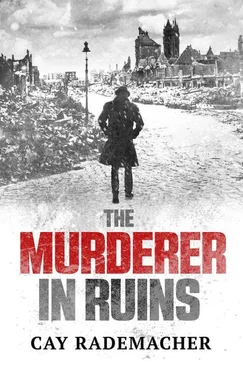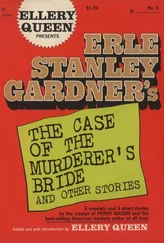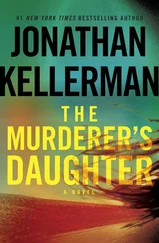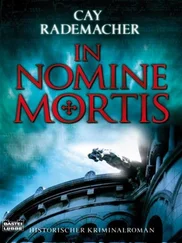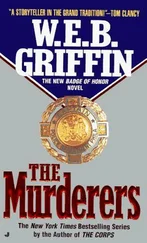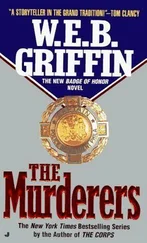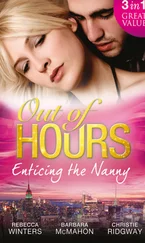Cay Rademacher - The Murderer in Ruins
Здесь есть возможность читать онлайн «Cay Rademacher - The Murderer in Ruins» весь текст электронной книги совершенно бесплатно (целиком полную версию без сокращений). В некоторых случаях можно слушать аудио, скачать через торрент в формате fb2 и присутствует краткое содержание. Год выпуска: 2015, ISBN: 2015, Издательство: Arcadia Books Limited, Жанр: Триллер, на английском языке. Описание произведения, (предисловие) а так же отзывы посетителей доступны на портале библиотеки ЛибКат.
- Название:The Murderer in Ruins
- Автор:
- Издательство:Arcadia Books Limited
- Жанр:
- Год:2015
- ISBN:9781910050750
- Рейтинг книги:5 / 5. Голосов: 1
-
Избранное:Добавить в избранное
- Отзывы:
-
Ваша оценка:
- 100
- 1
- 2
- 3
- 4
- 5
The Murderer in Ruins: краткое содержание, описание и аннотация
Предлагаем к чтению аннотацию, описание, краткое содержание или предисловие (зависит от того, что написал сам автор книги «The Murderer in Ruins»). Если вы не нашли необходимую информацию о книге — напишите в комментариях, мы постараемся отыскать её.
The Murderer in Ruins — читать онлайн бесплатно полную книгу (весь текст) целиком
Ниже представлен текст книги, разбитый по страницам. Система сохранения места последней прочитанной страницы, позволяет с удобством читать онлайн бесплатно книгу «The Murderer in Ruins», без необходимости каждый раз заново искать на чём Вы остановились. Поставьте закладку, и сможете в любой момент перейти на страницу, на которой закончили чтение.
Интервал:
Закладка:
He scrubbed himself until his skin was burning. He felt he needed to get rid of all the dirt, not just the dirt he could see, but the invisible dirt. And by now it was light enough for him to see his own face in the mirror that hung over the sink. Not that it exactly cheered him up.
Out on the street he was glad not to be in uniform. Nobody recognised him as a policeman. Everywhere he looked he saw the posters: the headline ‘Does anyone recognise these people?’ And then the photographs of four corpses. The text below was, if you read it properly, an obvious plea for someone to identify at least one of them. Cuddel Breuer had given permission for 60,000 of these posters to be printed. It seemed to Stave as if every wall, every advertising column was covered in them. They had been sent out by courier to the police in other cities, even in the Soviet zone.
I’m imagining this, Stave told himself, but it seemed people were walking more quickly, avoiding eye contact more than ever, wrapping themselves ever deeper in their scarves and overcoats. Nobody walked near the ruins. People avoided them as if they carried the plague. People preferred to walk down the middle of the road than in the shelter of an empty facade or a half-collapsed wall.
In the guts of a bombed-out apartment house somebody had set up a little booth, like an ulcer made out of planks and cardboard. A frozen-solid piece of cloth hung from a line outside it. A cellar window had been built into the front of this makeshift dwelling with torn curtains still twitching from the hand that pulled them to. Somebody is watching me, the chief inspector thought as he passed. Somebody is on the lookout. He felt as if unseen eyes were following him, and turned his head discreetly. There was nobody there. He walked faster, then slowed down, turned abruptly to the right, then took an oblique turn back towards the street he had come from. Nobody. Just the usual bundled figures rushing hither and thither.
You’re driving yourself crazy, he thought.
When he got to the office he briefly hoped for a miracle, that the files would be lying back on his desk, that somebody had made a mistake. A harmless accident.
But the documents were still missing.
Stave wandered down the long corridors to find the police photographer. He couldn’t send Erna Berg as she wasn’t in yet, which was unusual in itself, he noted. He found the photographer in his lab and ordered new copies of the photos of the victims in the rubble murderer case. He paid no attention to the astonished look the request provoked.
When he got back to his office, Erna Berg was just opening the door, her face pale and puffy, her eyes red, but trying not to let any of it show.
The pangs of love, Stave guessed. If she doesn’t want to talk to me about it, she doesn’t have to. He said ‘Good morning’ in his usual voice as if there was nothing evidently wrong. ‘Please call in Maschke,’ he told her, and with just the slightest hint of reticence, ‘and tell Lieutenant MacDonald to come over at 2 p.m. this afternoon.’
When Maschke got there, the two of them went together to see Dr Czrisini. Stave wanted to be there when the body was cut open. His colleague went pale when he heard where they were going, and said nothing the whole way.
It took them barely a quarter of an hour, along the embankment, past Dammtor station. If Burger-Prinz is right, it struck Stave, then I’m walking through the rubble murderer’s patch. White steam from a locomotive rose from the steel and glass ceiling of the station. People in overcoats, their heads covered with anything they could find, hundreds of them, just like everywhere else. I’m hardly the most vulnerable person amongst this lot, Stave told himself. The killer won’t be lurking here waiting for me. He had no hope of spotting a suspect here.
They hurried on, across the wasteland around the university, turned into Neue Raben Strasse, a peaceful district in Rotherham, near the Alster where the pathology institute was located. Stave wondered how many owners of these privileged villas knew there had been corpses strewn all around the district.
A few minutes later the two of them were standing in the brightly lit room next to the dissecting table with the corpse laid out on it. Thawed now. Dr Czrisini greeted Stave, then Maschke, and introduced them to his young, bespectacled assistant who would take notes on the pathologist’s findings during the autopsy.
Stave shook their hands and huddled ever deeper into his overcoat, earning a haughty glance from the assistant. Stave gave him a friendly smile in return. Don’t get your hopes up, I’m not going to fall over. He wasn’t so sure he could say the same about his vice squad colleague. Maschke had barely shaken hands and looked like he might throw up into one of their chrome basins at any moment. Stave was just cold. Even the two doctors were wearing overcoats under their white coats.
Czrisini started with the head, feeling it and examining it before taking up a scalpel and a bone saw. He proceeded methodically, dictating as he went along, much of it stuff Stave already knew. But then he stopped.
‘Small reddish brown dried-up wounds on the left side of the forehead,’ the pathologist said. ‘Bleeding within the skin, the right side of the forehead swollen above the eyelid. Possibly the result of blows to the head.’
So it wasn’t just the old man who’d been beaten before he’d been killed, Stave thought. At least one of the women had tried to defend herself – either that or the killer had been harbouring a deep-seated hatred of her too.
After a bit Czrisini sawed off the top of the skull. A heavy smell filled the room. The assistant glanced discreetly, or so he thought, over at Stave, who gave him a sardonic smile in return.
Maschke, however, gagged, put his right hand over his mouth and dashed for the door, to a scornful look from the assistant. Stave felt like kicking him. People should be glad that not everyone could be so blase about poking around in corpses.
‘Brain already substantially degraded,’ Czrisini dictated imperturbably. Then he looked at the chief inspector and added, ‘Indicator for a time of death approximately four weeks ago.’
‘The twentieth of January then,’ Stave murmured.
‘Very possibly,’ Czrisini said.
The assistant glanced at the pair of them, clearly wondering how on earth they could have come to such an exact date.
‘Dental plate in the upper jaw,’ said the pathologist. ‘Two artificial molars in the lower jaw, gold. Right lingual bone and both upper laryngeal bones broken,’ Czrisini noted as he began dealing with the throat. ‘Typical in a strangulation case. Almost certainly the cause of death.’
The pathologist slowly made his way down the body, flayed it, and analysed the bones, nerves and internal organs.
‘Substantial partially digested foodstuff in the stomach,’ he noted. The smell did not improve. Czrisini’s assistant glance at Stave again.
‘Any idea what she might have eaten?’ the chief inspector asked.
‘Bread most likely. Or porridge. Enough at least for her not to be hungry.’
Eventually the doctor got to her lower abdomen. Stave came closer out of curiosity.
‘No sign of vaginal injury,’ Czrisini noted. He took up the scalpel again, sliced open the old scar, entering the woman’s body the way a surgeon must once have done.
‘Left fallopian tube missing.’
‘The result of an operation?’
‘Probably. The right-side tube has developed abnormally and the ovary is enlarged.’ He stopped, then cut away some tissue which Stave couldn’t identify as belonging to any organ.
‘There,’ the pathologist said, indicating something red in the ovary which the chief inspector didn’t recognise. ‘Something in the ovary. Saturated with blood. About the size of a cherry.’
Читать дальшеИнтервал:
Закладка:
Похожие книги на «The Murderer in Ruins»
Представляем Вашему вниманию похожие книги на «The Murderer in Ruins» списком для выбора. Мы отобрали схожую по названию и смыслу литературу в надежде предоставить читателям больше вариантов отыскать новые, интересные, ещё непрочитанные произведения.
Обсуждение, отзывы о книге «The Murderer in Ruins» и просто собственные мнения читателей. Оставьте ваши комментарии, напишите, что Вы думаете о произведении, его смысле или главных героях. Укажите что конкретно понравилось, а что нет, и почему Вы так считаете.
